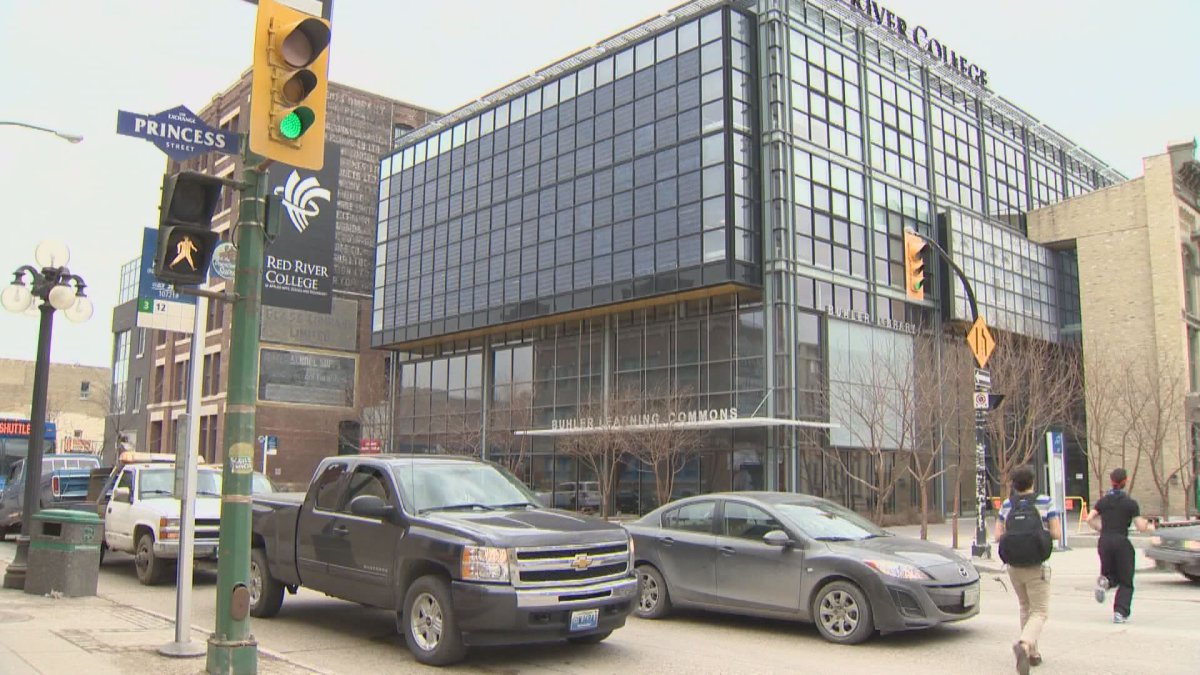A new report has said Manitoba’s colleges must improve their overall graduation rates by 15 per cent in just five years.

The education review was completed by Toronto’s Higher Education Strategy Associates (HESA) on behalf of the provincial government.
It found that only 62 per cent of Manitoba college students graduate, which is ten percentage points behind the national average. It also said Manitoba’s Indigenous graduation rates, also the lowest in Canada at 43 per cent, must increase by 20 percentage points.
The goals are part of an overall change of the college system recommended by the review.
“What’s been lacking has been well-articulated institutional missions and goals for the sector as a whole,” Alex Usher, HESA president and co-author of the report, said. “Because there’s never been a very strong mandate from the government, it’s very difficult to say there’s been much in the way of accountability. There needs to be incentives through a funding formula and they require greater operational flexibility.”
“I think the over-riding theme of the report is: Let the institutions manage. Let governments steer, but not row. That’s the way high-performing post-secondary education systems around the world work.”
The 206-page review focused on the five schools in Manitoba that offer college-level training: Red River College, Manitoba Institute of Trade and Technology, Université de Saint-Boniface, University College of the North, and Assiniboine Community College.
“For most of our programs, they’re full or have wait lists. There’s no point in having a bigger lineup at the door if you don’t have the additional seats,” explained Mark Frison, president of Assiniboine Community College. “More seats is absolutely key, and getting some of those seats closer to where the learners live, in rural areas, is important as well.”
The report acknowledged some of the unique geographical challenges Manitoba is faced with, having the majority of its population in one urban centre. It suggests the schools “be jointly responsible for producing a regular community-by-community assessment of training needs across the province.”
“We want to be efficient about using money. We are one of the lower-cost jurisdictions. We want to be affordable for students but we also want to be sure we’re getting a for-value outcome,” Education Minister Ian Wishart said.
“We’re having to be very careful with our spending. We need to have a system that functions not only for this generation but for the next.”
The review does not contain any specific recommendations about what kind of funding or tuition raises would be necessary to cover the money needed to facilitate such growth, but Red River College took issue with the idea of creating an outcomes-based funding formula.
“We believe it would require more resources to administer and even more peculiarly, would apply to only 28 per cent of the sector (ie: only colleges, not universities),” said RRC spokesperson Conor Lloyd. “So, we will wait for further direction from the Province on funding.”
Red River also explained why its graduation rate is sitting at 61 per cent.
“We are always working to improve graduation rates while also maintaining our ‘first-qualified; first-admitted’ approach to accepting students. This makes the task different for Red River than others who improve grad rates via policies that restrict entry,” Lloyd said. “There are programs like ACCESS with considerably lower graduation rates. We are well aware of this, which is why we are in the process of revamping ACCESS program and changes will be coming soon.”
This report focused solely on colleges. Wishart said there are currently no plans in the works to conduct a comparable review of Manitoba universities.
- What is a halal mortgage? How interest-free home financing works in Canada
- Capital gains changes are ‘really fair,’ Freeland says, as doctors cry foul
- Ontario doctors offer solutions to help address shortage of family physicians
- Budget 2024 failed to spark ‘political reboot’ for Liberals, polling suggests








Comments